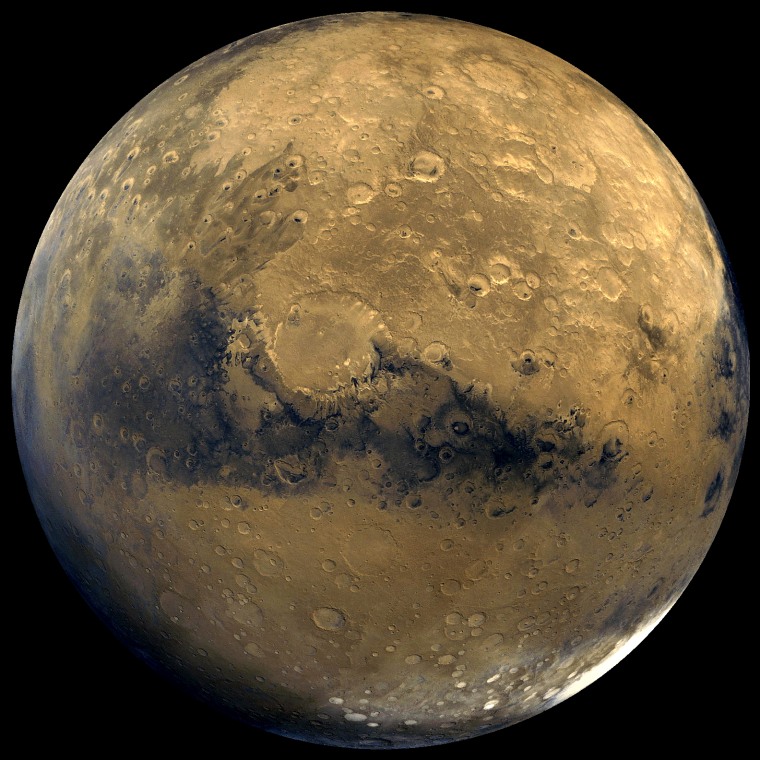Getting humans to Mars, one of Earth's nearest planetary neighbors, has been an endless source of fascination for NASA — and something the space agency hopes to achieve in the early 2030s.
In honor of the Red Planet, NASA is calling today #NASAMarsDay and celebrating by answering questions and sharing a behind-the-scenes look on social media detailing the steps it has been taking to prepare for the eventual journey. NASA has also launched a series of Instagram and Snapchat stories.
The special event is set to conclude tonight with the hot fire test of an RS-25 engine at NASA’s Stennis Space Center.
Four of these engines will ultimately power the Space Launch System, also known as SLS, which is the heavy duty rocket NASA will use to send astronauts on deep space missions. The event will be streamed on NASA TV beginning at 6 p.m. ET.
While robotic Mars missions have been roving the Red Planet for decades, the challenges of sending humans there are complex.
NASA released a 36-page report last October detailing the obstacles it will have to address, including the preparation of a new rocket, crew living quarters for the six-month trip each way and how to land softly on the planet's surface.
Aside from building the ride to Mars, NASA is also focusing on astronauts' living quarters inside the Orion spacecraft and is working with partners to develop deep space habitats astronauts could deploy upon landing — already familiar to anyone who has seen the movie "The Martian."
There are other considerations to be made, including growing food in space and the effects of a long-duration mission on the human body.
Many of these experiments are already being conducted at the International Space Station, where Scott Kelly completed a historic one-year stay in March. During that time, Kelly also served as a space gardener, even snacking on "Outredgeous" red romaine lettuce.
